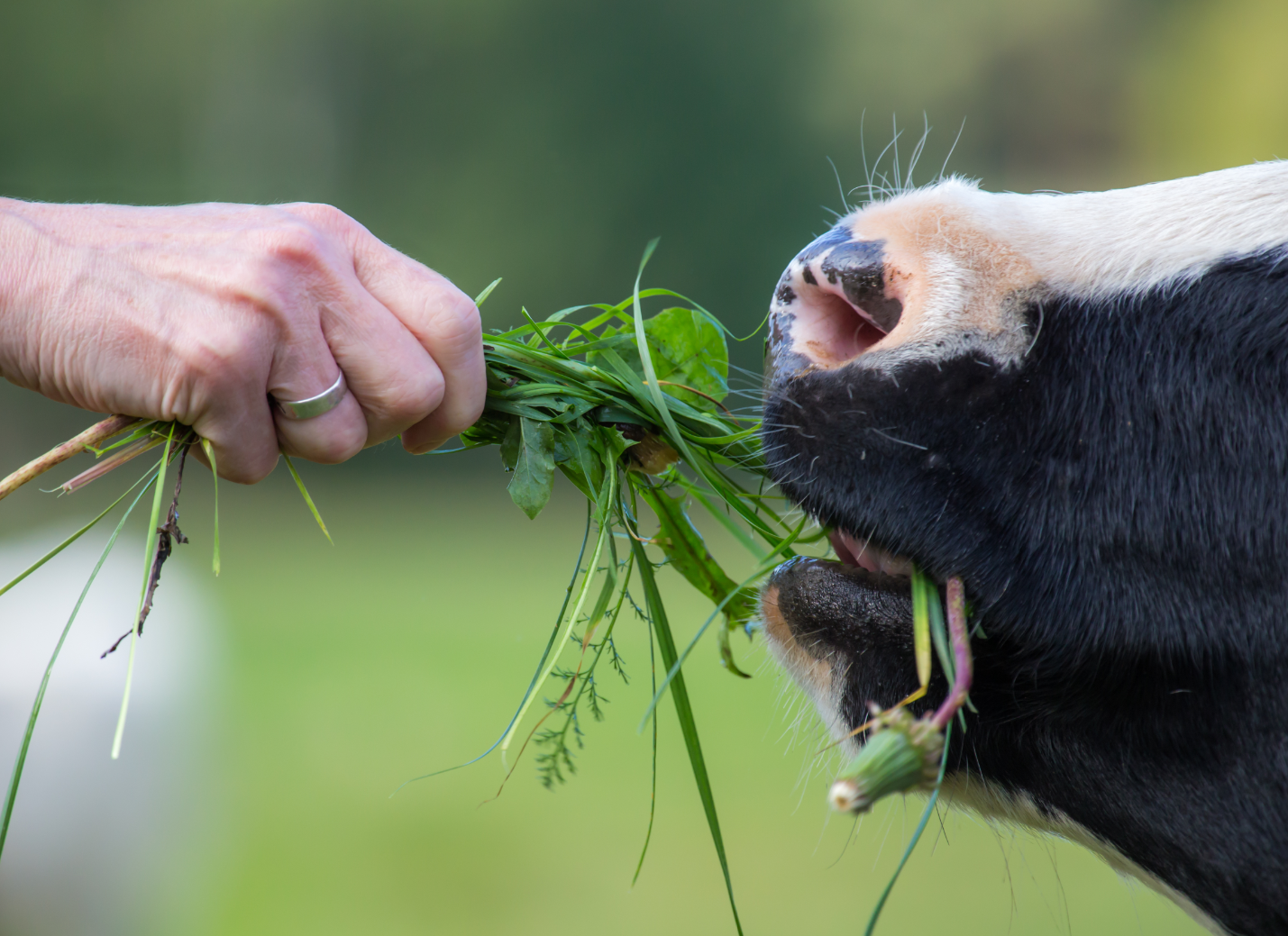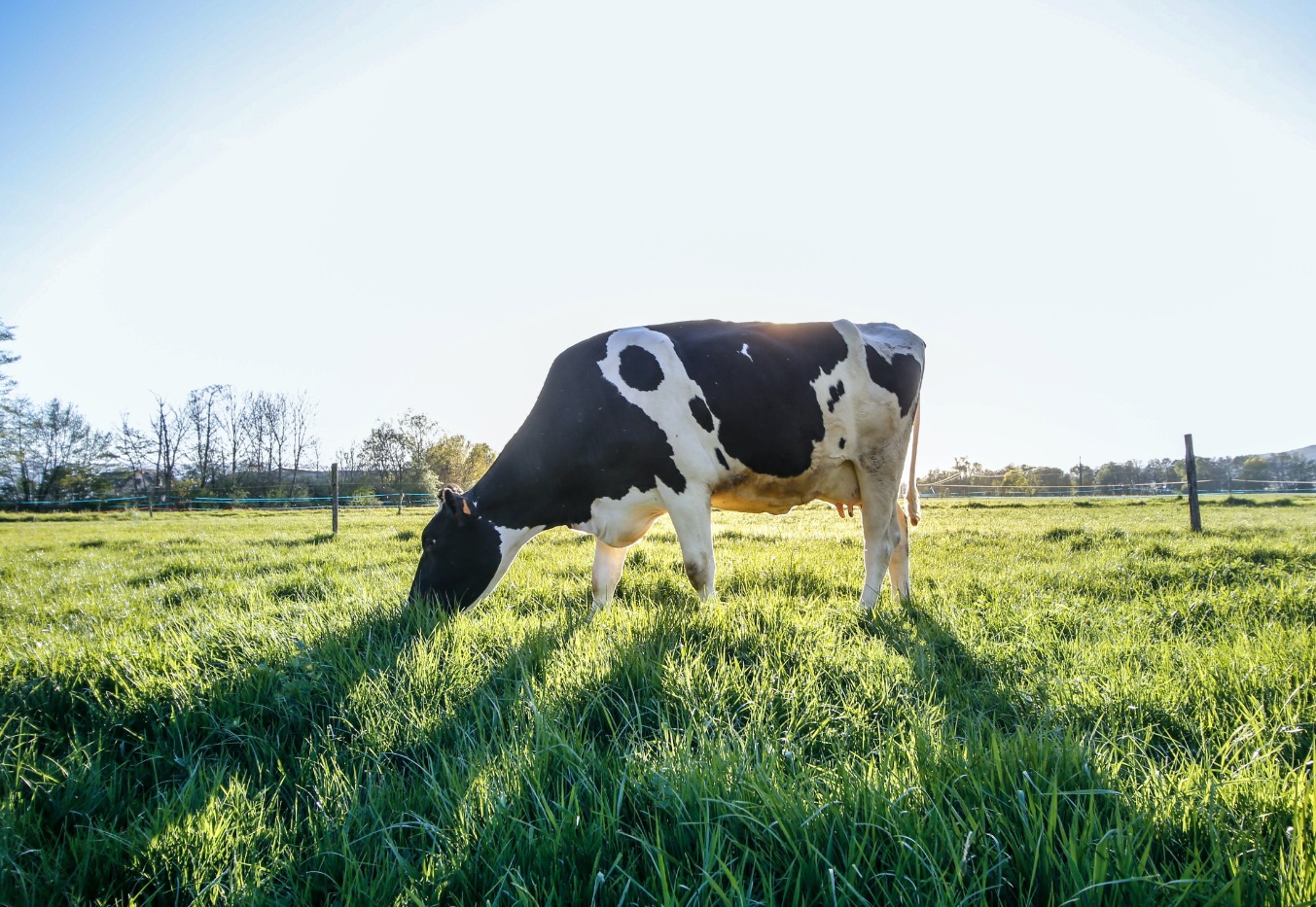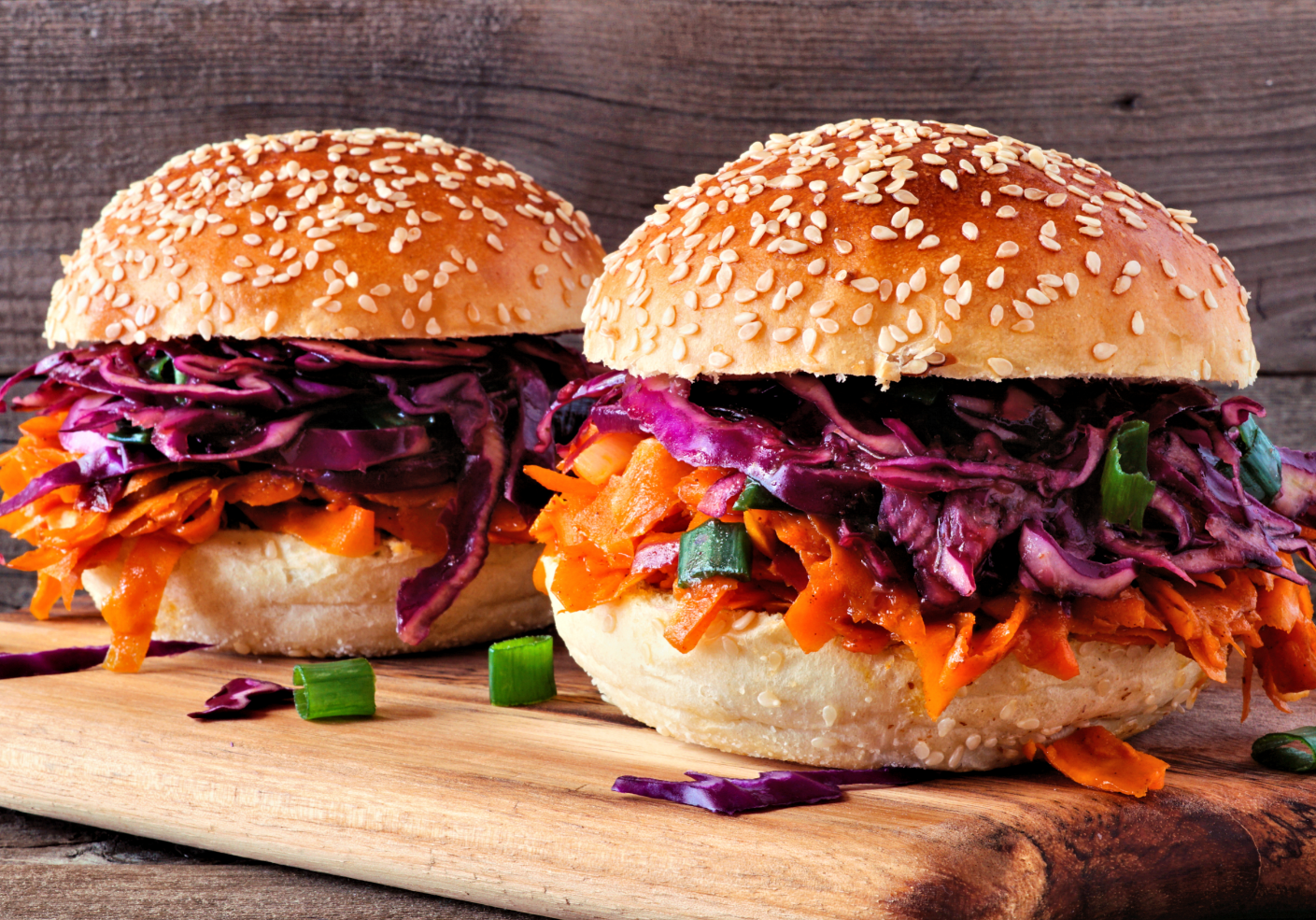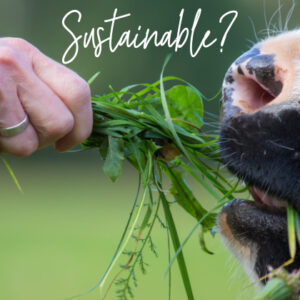Is pasture-raised beef sustainable? Advocates say it is, but is this just another marketing ploy to keep meat in the game? Here’s why I wouldn’t exactly call grass-fed beef eco-friendly.

The term “sustainable” is pretty broad and means different things to different people.
To me, it suggests that a product can meet the needs of the current consumer demand without compromising the ability of future consumers to meet their same needs. In other words, future generations will still have a planet to live on and enough natural resources to use, regardless of a product’s environmental footprint today.
It’s no secret that factory farm beef is far from eco-friendly (not to mention the ethical and health-related issues it presents). The FAO estimates that livestock contributes to 18% of total human-derived greenhouse gas emmissions and over 50% if we’re just looking at agriculture and forestry. But what about grass-fed or pasture-raised beef? Advocates say that this option is more sustainable because grain isn’t being grown and transported for feed, fewer pesticides and antibiotics are being used, and there’s less reliance on fossil fuels compared to factory farm beef.
These are pros, sure. But when it comes to calling grass-fed beef a truly “sustainable” food, I call bull. Here’s why.
Grass-fed beef versus grain-fed beef
First of all, what’s the difference between grass-fed (pasture-raised) and grain-fed (feedlot or factory-farmed) beef?
Feedlot cows initially eat grass on a pasture, until they’re weaned from their mother. They are then “finished” (meaning they gain weight quickly in preparation for slaughter) for around 120 days, on a corn or grain diet. These cows are generally sent to slaughter when they’re 14-18 months old.
Grass-fed cows remain on the pasture for their entire lives and are slaughtered at 18-24 months old. Note that there’s a difference between certified 100% grass-fed beef, and grass-fed beef that’s been mostly pasture-raised, but was either started on or finished with a grain-based diet to gain weight quickly.

Pasture-raised beef is not better for the planet
Here are 5 reasons why even pasture-raised beef isn’t sustainable. In fact, shifting toward a grass-fed model may have worse outcomes for the planet.
1. It still requires a lot of water resources.
Some sources estimate that 1 pound of beef requires approximately 1,800 gallons of water to produce when you take into account the water needed to raise the animal, grow the grain to feed them, etc.
A 100% grass-fed cow takes longer to reach its slaughter weight than a factory-farmed cow, who is fattened up quickly with grain. This also means that pasture-raised cows will consume more water in comparison, simply because of their longer lifespan.
2. It still requires a lot more land.
Factory-farmed cattle are packed together on feedlots – up to 100,000 cows on some farms. But even though pasture-raised cattle get to avoid this scenario, the way they’re raised requires a lot more land to graze on.
According to the FAO, approximately 26% of the ice-free land on Earth is used for livestock grazing. And grass-fed cows require around 41% more land than grain-fed cows, according to a 2015 life cycle assessment of different beef production systems.
More land for cows means less land for carbon-sequestering plants.
3. It’s still a threat to biodiversity.
The biodiversity of an area refers to the number of species, both plant and animal, inhabiting the environment. When a species is no longer found in a region, it is locally extinct. When it is no longer found anywhere, the species is considered extinct.
Grazing cows are a threat to native wildlife and carnivores in the area. Unfortunately, much of the planet’s land that could be used to help preserve species and promote biodiversity is allotted to grass-fed beef instead. Native predators, like wolves, are often hunted or relocated in order to protect grass-fed cattle herds.
A 2020 meta-analysis of 109 independent studies examined the effects of livestock grazing on biodiversity of not just native plants, but also animals and insects. The authors found that when you remove livestock from land, the abundance and diversity of native species increased. They also concluded that even if you remove livestock now, there are long-term consequences of poorly managed grazing over the past century that need to be properly addressed.
4. It still contributes enormous amounts of greenhouse gases.
Cows are ruminant animals, whether pasture-raised or factory-farmed. This means they have four stomachs involved in a complex digestive process, called enteric fermentation, that allows them to break down roughage. Cows chew and regurgitate their food twice before it’s digested by microorganisms in their rumen.
The problem is that enteric fermentation results in very gassy cows, releasing enormous amounts of methane. And while cows raised on feedlots eat simple grains that require minimal digestion, pasture-raised cows eat grass, which falls into that category of roughage that requires rumen digestion.
As a result, some research estimates that pasture-raised cows actually emit 4 times more methane than factory-farmed cows. One study found that grass-fed cows produced 37% more methane because of their longer life span and lower weight at slaughter.
Methane is a greenhouse gas, which accumulates in the atmosphere and contributes to climate change. And while we often hear about the negative effects of carbon dioxide (CO2) emissions from transportation, methane is 25 times as powerful as CO2 at heating up the atmosphere. (Not to mention, cows also emit CO2 just by breathing).
Plus, while methane has a shorter atmospheric lifespan, the billions of gassy cows on the planet aren’t exactly leaving the atmosphere with a shortage.
5. Pasture-raised beef requires more cows
A 2018 Harvard report published in the journal Environmental Letters found that if we shifted the world to exclusively grass-fed beef production, this would require 30% more cattle just to keep up with current consumer demands for beef.
Plus, this would result in an estimated 43% increase in cattle methane emissions. Not to mention, more pasture-raised beef equals more land and water resources needed to raise them.

Try this instead
Rather than eating conventional or grass-fed beef, give more plant proteins a try! Examples include beans, peas, lentils, nuts, seeds, seitan, tofu, tempeh, and edamame.
While no food product is going to have zero effect on the environment, plant foods are better for the planet in that they require significantly fewer resources, and can feed the world more efficiently. Not to mention, they’re delicious and packed with nutrition.
Here are some of my favorite plant-based recipes that easily replace a beef or meat-centric meal:
The idea of grass-fed beef may be appealing for some consumers looking to prioritize sustainability. But at the end of the day, it’s not all it’s cracked up to be. Compared to factory-farmed beef, pasture-raised beef has some pros, but not enough to put it on the sustainability pedestal… and may even be worse for the planet. Instead, try substituting more earth-friendly plant-based proteins in place of beef altogether.
Weigh-in: Have you heard any other arguments for or against grass-fed beef? Share below!
Check out these posts for more truths about meat and plant-based proteins:
– Whitney
IF YOU’RE INSPIRED BY THIS POST MAKE SURE TO SNAP A PIC
AND TAG #WHITSKITCH – I’D LOVE TO SEE!


